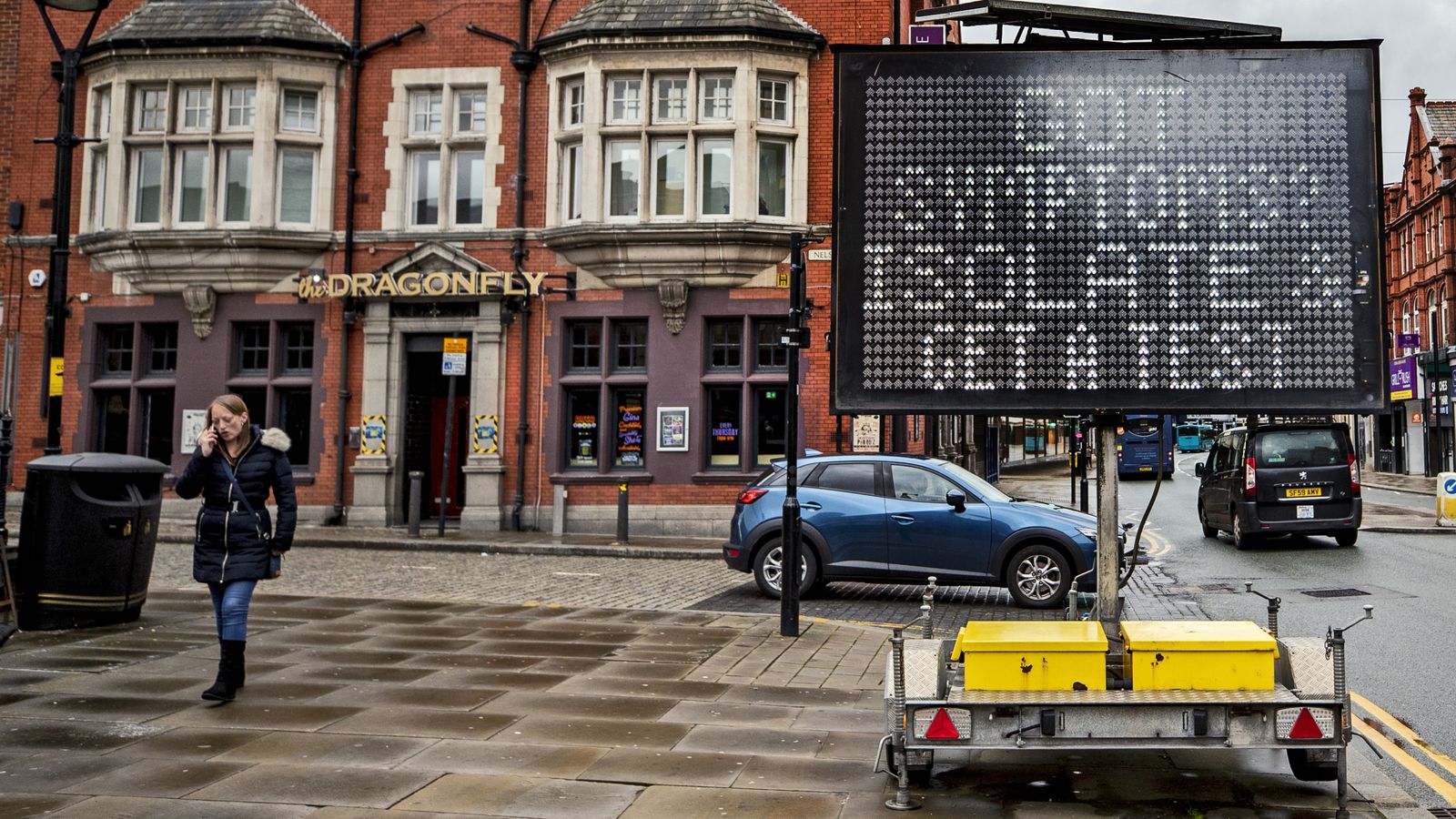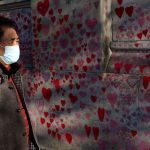England’s R number has fallen slightly to between 1.1 and 1.4.
Last week it was listed as between 1.2 and 1.4.
The R number is highest in the East of England, where it is between 1.3 and 1.5. It is lowest in the North West (1.0 to 1.2).
The daily growth rate of infections in England was estimated at between 2% and 5%, down on the previous week when it was between 4% and 6%.
Live COVID-19 updates from the UK and around the world
The figures, now produced by United Kingdom Health Security Agency, are updated every Friday.
An R value – or reproduction number – between 1.1 and 1.4 means that, on average, every 10 people infected with COVID-19 will go on infect between 11 and 14 other people.
Anything above 1 means the coronavirus outbreak is growing exponentially – but below 1 means the case rate is shrinking.
These estimates represent the transmission of COVID two to three weeks ago, due to the delay between someone being infected, developing symptoms, and needing healthcare.
This week’s regional breakdown for the R number (on the left) and infection growth rate (on the right) is as follows:
The latest estimation comes as the Office for National Statistics (ONS) released its weekly infection survey.
The ONS data showed 856,200 people had coronavirus outside of hospital or a care home in England in the week ending 24 July – the equivalent of 1 in 65 people – which is an increase on the week before when the figure was one in 75 people.
The survey also shows that COVID positivity rates are highest in the North East of England – but are increasing in all regions – apart from the East and South West, where the trend is unclear.
Cases are highest in younger people and lowest in the over-70s, while hospitalisations among 15 to 24-year-olds are the highest they’ve been since the start of the pandemic.






















